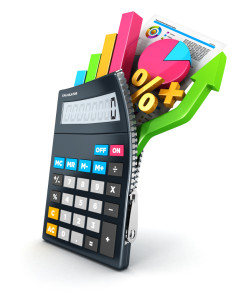Editor’s note: JD Deitch is COO of research firm AYTM, San Francisco.
 The rings have been handed out. Super Bowl 50 is now a memory and the NFL is on hiatus until late summer. However, the commercial game is still going as the advertisers (hopefully) continue to record the gains from their multi-million dollar plays.
The rings have been handed out. Super Bowl 50 is now a memory and the NFL is on hiatus until late summer. However, the commercial game is still going as the advertisers (hopefully) continue to record the gains from their multi-million dollar plays.
Brands pay upwards of $5 million dollars for a coveted commercial break, the most expensive 30 seconds on television. There is also elevated pressure to make these adverts more entertaining than the usual fare. Super Bowl fans will stick around to catch the adverts, a unique phenomenon in televisual advertising, so a poor advert can have an increased negative effect on the perception of that brand. Some people will be wondering whether it was worth it. I wondered the same thing, so we tested the numbers.
Running an online survey two days prior to the big event on adverts that had already been posted online, we interviewed a nationally representative sample of 1,400 in the U.S. The team designed a classical monadic advertising effectiveness experiment with a control group of people who haven’t seen any ad as a baseline and various test groups of people who saw one of the ads to determine whether the ads significantly impacted purchase likelihood or brand attributes. We limited our testing to two categories: beer and cars.
The study found Budweiser as the most effective ad we tested for the probable Super Bowl audience, driving significant lift in purchase likelihood and virtually all brand attributes. While other companies had high performing ads, only Budweiser did so in distinctive fashion, driving an increase in its brand only, while car brands especially created lift across the category. Shock Top (the other key beer brand) ad viewers had a slightly higher purchase likelihood but brand attributes weren’t affected at all.In the car categories Hyundai, Acura and Mini were strong performers with ads that drove significant lift in purchase likelihood and brand elements. However, respondents who viewed the ads rated most of the other car brands higher as well. Audi drove significant improvements in brand attributes but did nothing to create greater purchase likelihood. Honda was an interesting case as it advertised a truck rather than a car. Purchase likelihood was not affected, and only brand respectability and “reflects the person I am” attributes were impacted.
Many would imagine Super Bowl Ads must be a good value for the money, as companies wouldn’t spend so much on them if they were not. But we think that for a Super Bowl ad to be worth it, it needs to move people to buy a product. In that sense, was it all worth it? In a word, no.
I did some back-of-the-envelope math on this. Budweiser sales were about $2 billion in the U.S. in 2013. Global sales and marketing expenses were about 15 points in margin (same report). Assuming the same rate of sales and marketing expense and a comparable U.S. EBITDA margin of about 43 percent, Budweiser would need to see a sales lift of a little over $10 million from that one ad. We’ll guess they don’t make more than a dollar on every beer as they’re always selling through a middleman. That is a LOT of beer to sell. (Helen Mirren doesn’t make us want to drink that much beer.) That said, it’s a fraction of their advertising budget and their ad was effective.
Bud is the exception though. The rest of the companies – namely the car manufacturers – weren’t as fortunate. The real crime here is poor execution. These are not small unknown brands. They’re big companies with big budgets – and big agencies. But this is part of the problem. Super Bowl commercials are like yachts on the Mediterranean coast: when you’ve got that much money, you’re obliged to have something big and narcissistic and profligate. The trouble is, there are a bunch of other showoffs with yachts are just as big as yours. For the vast majority of companies, this points to the importance of targeting and testing.
